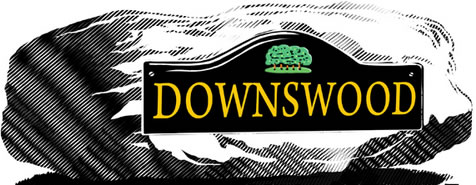A brief History of Downswood by Cllr Raj Rajalingam
(See separate 'About' tab for further info)
Downswood Parish is relatively a new one compared to Bearsted and Otham parishes.
Downswood parish was formed in 1987 having separated from Otham parish which was very old going back to the reign of King Henry III (1207-1272).
As Downswood area was in the parish of Otham, the history of Downswood is associated with Otham History.
Otham was given by William the Conqueror to his half brother Odo, Bishop of Bayeux. On the disgrace of Bishop, the land came into the hands of the crown and Peter de Otham held the land as a Knight in the reign of King Henry III.
Hence the parish Otham was named after Peter de Otham.
Similarly the Bearsted Parish was also very old and going back to 12th Century and it was named after Beorg meaning homested on a hill. Hence it was called Bearsted.
Both Otham and Bearsted have history behind them and available in the KCC library, whereas the Downswood has no written history available currently.
Downswood is a civil parish in the Borough of Maidstone in Kent, England. The population of the civil parish as of the 2011 census is 2,291. It is bounded to the north by the River Len and Bearsted, to the south by Otham, to the east by wooded and arable area and to the west is Mote Park which is 450 Acres of community park with lake, play grounds and trees. Downswood is about 2 miles (3 km) from Maidstone, the county town of Kent.
Between 1940 and 1970 the area was quarried for ragstone which is still evident from outcrops that appear in Spot Lane Nature Reserve and The Len Valley Walk. The easternmost ragstone quarry exhibits a series of cambered blocks, tilted down slope and intervening loess filled gulls. The site in Downswood provides the best cross section through a series of cambers and gulls that are currently visible in Britain and is a site of special scientific interest.
The ragstone quarry which was owned by Crump Family from 1372 (by his descendants until 1591) and during the reign of Richard II (1377 -1399). The ragstones from the quarry were used in the wharf at the Tower of London, Buildings in the City of London, Rochester Bridge, and it is believed that the ragstone wall around the boundary of Mote Park came from the same quarry.
The development of this area for residential housing of 88.96 acres was initially identified in 1970s and the initial development for 1000 houses was called Spires Development in reference to the SPIRES of St Nicolas’s Church which is very close to the area. To the south of Downswood lies St Nicolas's Church which has its origins in the 12th century and to the east stands The Orchard Spot, formerly a local public house that was originally established in the 14th century as a farm house for local orchards.
A corn mill was recorded in the Domesday Book on the River Len. A fulling mill was also established on the river but this was not until around 1550. The Mill pond and the reminiscent of the mill is still evident in the Old Mill House.
The topography of the Parish is sloping DOWN from Otham towards Len River, again the adjacent parish of Bearsted is sloping DOWN towards Len River. It is very interesting to note that from south, ( from Sutton Road) Willington Street is sloping DOWN towards its junction with Deringwood Drive and also sloping DOWN from north (from A20 Ashford Road) towards the junction of Deringwood Drive. The name WOOD is appearing several times in the parish road names such as Deringwood, Bournewood, Longham Copse and Reinden.
Downswood Parish is also not far from Northdowns in Kent.
[Reinden Wood is in part of the East Kent Dry Training Area, which extends in small blocks in an arc between Hythe and Dover, extending a few miles inland. This area around Dover is steeped in military history going back for centuries. The East Kent Dry Training Area is rural in character and is used extensively by the military for tactical training exercises. Situated within the Kent Downs Area of Outstanding Natural Beauty, Reinden Wood is an important habitat for woodland plants and butterflies.]
My suggestion and inference is that (in the absence of how the name DOWNSWOOD was derived) the above topographical nature where the parish lies (DOWN) and it is surrounded by wooded areas in the east and west and also the parish road names contain references to WOOD I believe that therefore the Parish was named DOWNSWOOD.
The A20 Ashford road was constructed in 1820 and the Railway from Maidstone to Ashford was finally arrived in 1884.
After the Downswood was built both the road network and the high speed railway in Kent were opened. M20 (Section 1 in 1986, Section 2 in 1991), M26 in 1986 and High Speed Rail HS1 in 2007).
Hertitage Map 1929 to 1952.pdf




.jpg)




